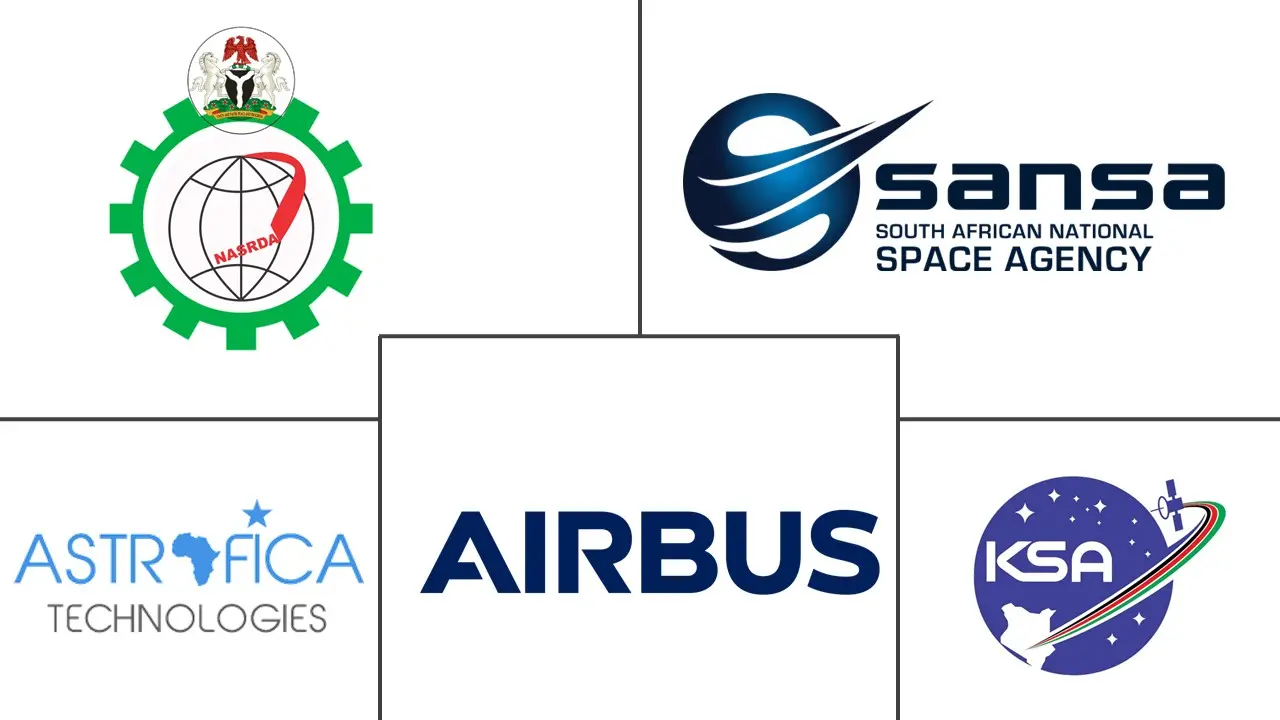Africa Satellite-based Earth Observation Market Size and Share
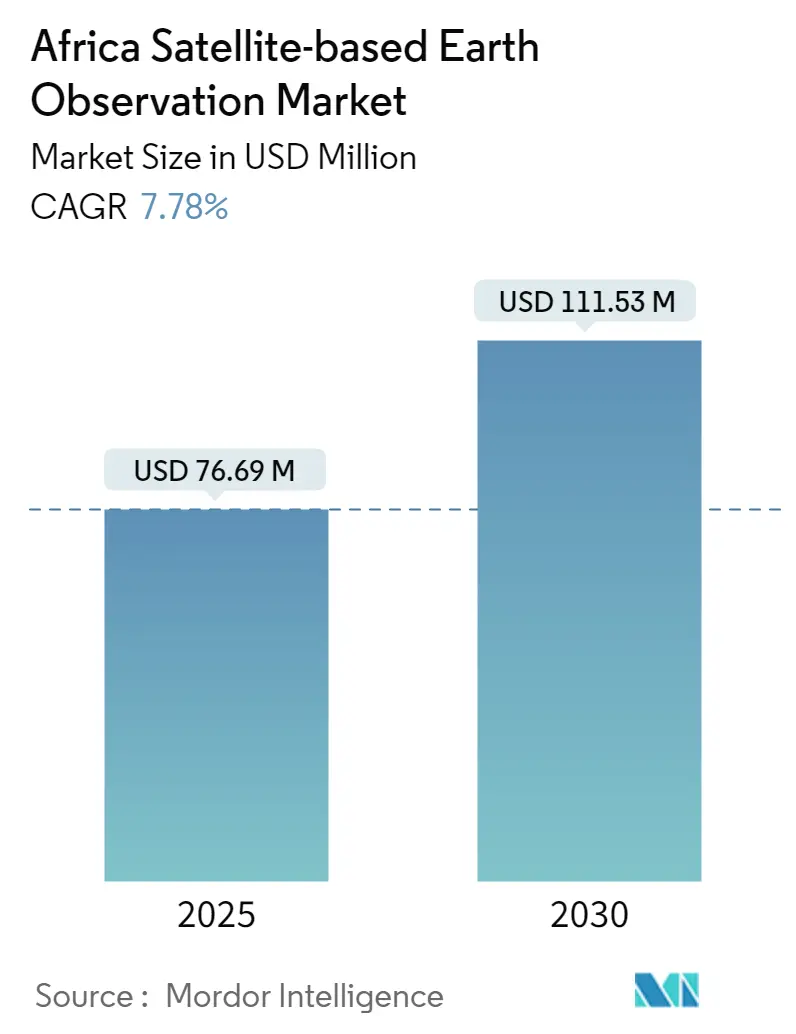
Africa Satellite-based Earth Observation Market Analysis by Mordor Intelligence
The Africa Satellite-based Earth Observation Market size is estimated at USD 76.69 million in 2025, and is expected to reach USD 111.53 million by 2030, at a CAGR of 7.78% during the forecast period (2025-2030).
- The growing adoption of earth observation imagery in several applications, such as disaster management and agriculture in the region, alongside government aid through space agencies, is analyzed to bolster the market growth rate during the forecast period.
- In March 2023, the South African National Space Agency (SANSA) utilized Earth observation satellite data to map infrastructure damage caused by the high rains and flooding in the Eastern Cape Province. On March 27, 2023, SANSA activated the International Charter, Space, and Major Disaster in collaboration with the National Disaster Management Centre. The activation of the charter authorizes the owners of the participating earth observation satellites to provide picture acquisition priority over the Eastern Cape province flood-affected areas. The National Disaster Management Centre, local governments, and affected industries use the flood damage maps created by Earth Observation satellite data to help with disaster response activities and estimate the damage from floods.
- Further, the growing launch of advanced solutions in satellite-based earth observation significantly contributes to the market growth rate. For instance, in October 2022, Esri, a player in location intelligence, and Digital Earth Africa signed a memorandum of understanding to support regional businesses that use data sciences to develop distinctive responses to climate change effects like food security, natural disasters, displacement, and vulnerable populations in Africa.
- The collaboration develops and launches technology solutions based on free, open-source space imagery and other types of earth observation data. It promotes and supports sustainability in governance and business. African organizations can examine satellite imaging data using Esri's geographic information system (GIS) software to find patterns and forecast implications for the future. The Africa GeoPortal, a cloud-based platform that offers geospatial data and images for Africa and solutions from Esri and its partners, will allow access to this content.
- Several nations in the region, such as Kenya and Ethiopia, are also launching significant earth observatory satellites, contributing to the market growth rate. For instance, in January 2023, Ethiopia stated it was preparing to launch its third satellite into space. Earth observation satellite ETRSS-2 will include a higher image resolution than its predecessors, ETRSS-1 and ET-Smart-RSS, launched in December 2019 and 2020. Since its launch, the country's two earth observation satellites monitored the weather and environment for better agricultural planning, drought early warning, mining, and forestry management.
Africa Satellite-based Earth Observation Market Trends and Insights
Government initiatives and investments is analyzed to drive the market during the forecast period
- According to UNCTAD, nearly 60% of the African population, or 794.7 million people, experienced moderate or severe food insecurity in 2021, up from 512 million individuals in 2014. At this rate, Africa needs to be on track to reach the SDG 2 nutrition and food security targets. Domestic problems worsen the food security situation in Africa despite the exceedingly difficult global environment. Africa underutilizes its capacity to feed itself.
- Satellite-based earth observation uses satellite data to monitor various aspects of agriculture, such as crop growth, water use, nutrient management, disease risk, yield estimation, etc. Satellite data can provide information about the crop status at different wavelengths, such as optical, radar, thermal, etc. Depending on the data type, additional information can be derived, such as vegetation indices, soil moisture, evapotranspiration, biomass, etc. Satellite-based earth observation can help farmers and decision-makers optimize resource use, increase crop productivity, reduce environmental impacts, and enhance food and water security.
- Further, with the growing population, as indicated in the graph, African governments and support partners must identify solutions to the current crisis while addressing the underlying causes of food insecurity across the continent. As a part of this, the space agencies in the region are launching satellites for efficient solutions, thereby contributing to the market growth rate.
- For instance, in January 2023, South Africa launched an Agri-Focused Satellite projected to produce USD 108 million in income. The success of Dragonfly's launch demonstrates South Africa's continued advancement in the space industry and will increase its attractiveness to investors. The launch will allow Dragonfly to proceed with its other projects, such as creating a constellation of satellites, while solidifying localization by enlisting the help of other businesses in this industry and similar industries. The satellite is the first in a constellation of seven that customer EOSDA (EOS Data Analytics) placed in low Earth orbit. Over the following three years, the constellation's final six satellites will be launched.
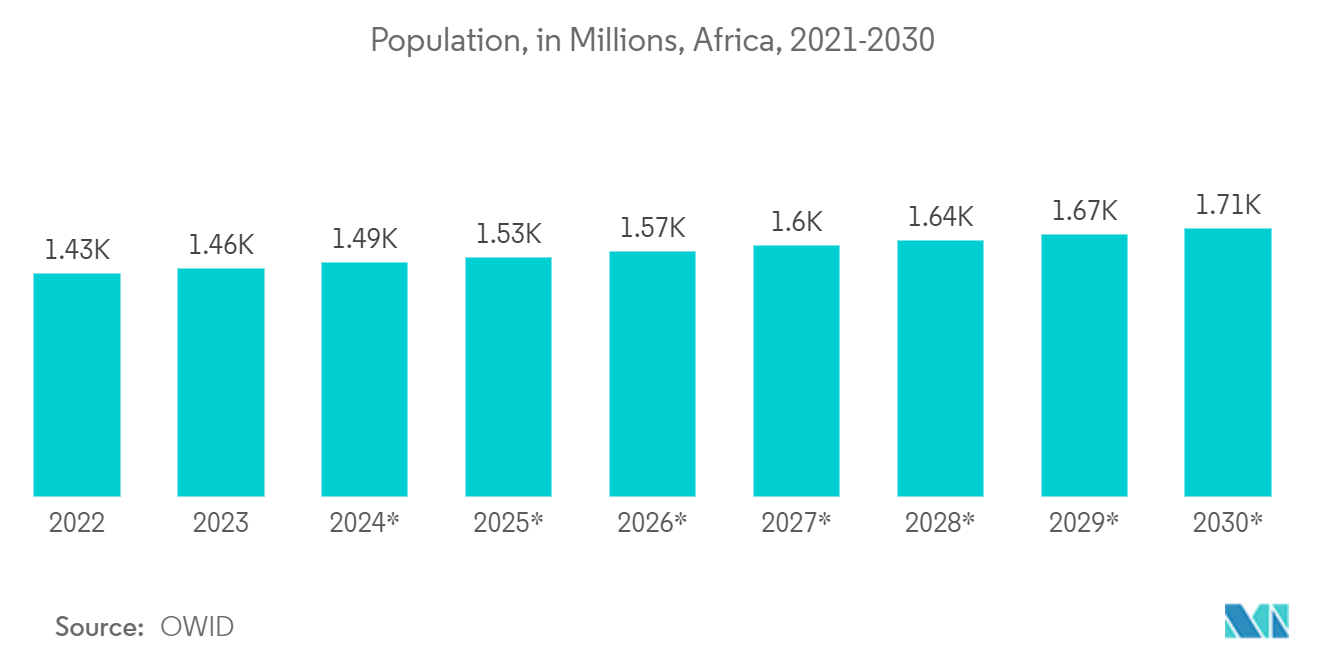
South Africa is analyzed to hold significant share during the forecast period
- South Africa's agricultural industry is by far the most advanced, successful, and varied in Africa. South Africa's highly developed agricultural sector will serve the country well in the face of economic and meteorological unpredictability. For Sub-Saharan Africa, adopting digital technology in agriculture represents a significant opportunity. Along the whole value chain, the rise of the mobile phone as a popular communication tool in combination with internet-based solutions might greatly increase access to financing for agricultural inputs. Unlocking agriculture opportunities in Africa will depend increasingly on digitalization and the efficient use of fertilizer and seeds.
- Further, the significant urbanizing in the nation is also analyzed to boost the demand for satellite-based earth observation services. Rapid urbanization is taking place in South Africa. Currently, 63% of the country's population lives in cities; by 2030, that number is expected to reach 71%. Eight out of ten people will reside in urban areas by 2050, increasing the need for minimal infrastructure.
- The government created an Integrated Urban Development Framework in light of this fact. In light of this, Cabinet approved the IUDF in April 2016. To accomplish the objectives of the NDP, it lays out principles, policies, and programs. Targeting government investments, programs, and projects requires spatial alignment as a planning goal. Various stakeholders, including the commercial sector and civil society, must strategically choose, prioritize, and coordinate their actions. These factors, alongside the growing collaborations in the earth observation services provision in the country, are bolstering the market growth rate.
- For instance, in November 2022, the South African National Space Agency (SANSA), in collaboration with its key partner, the South African Radio Astronomy Observatory (SARAO), recently released a beta version of the Digital Earth South Africa data cube platform. The highest industry standards for geometric and radiometric correctness and atmospheric correction are adhered to by SANSA, a custodian of decadal records of high-resolution imagery for South Africa in Analysis Ready Data (ARD) format.
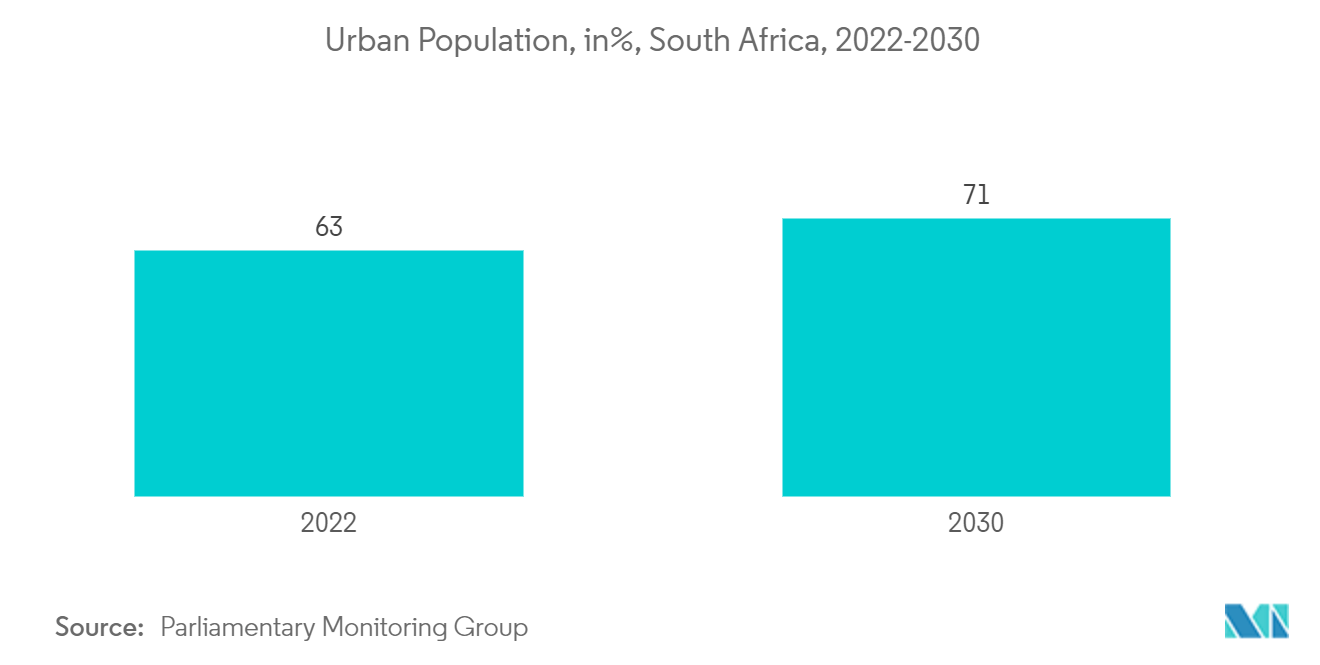
Competitive Landscape
Africa's Satellite-based earth observation is in the growth stage, with several nations adopting advanced technologies, thereby contributing to the market growth rate.
- April 2023-The nation of Kenya launched its first earth observation satellite into orbit. The Taifa-1 satellite from Africa was one of the satellites launched by SpaceX's Falcon 9 rocket. According to a joint statement from the Kenyan defense ministry and Kenya Space Agency, the satellite is intended to offer earth observation data for use in agriculture, food security, and environmental management. The expedition is a key turning point for Kenyan scientific innovation, particularly in food security, given that the nation is experiencing its worst drought in decades and five seasons with insufficient rainfall.
Africa Satellite-based Earth Observation Industry Leaders
SANSA (South African National Space Agency)
Astrofica
NASRDA (National Space Research and Development Agency)
Airbus
Kenya Space Agency
- *Disclaimer: Major Players sorted in no particular order
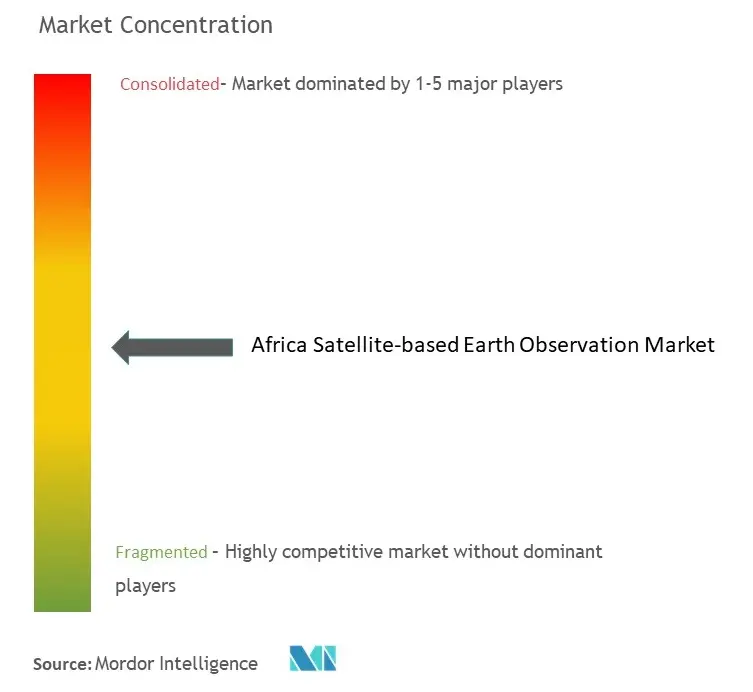
Recent Industry Developments
- May 2023: To enhance access to data and information, Nigeria joined South Africa as the second nation on the continent to join the Group on Earth Observations (GEO) GEO-Nigeria. Nigeria is represented internationally through the National Space Research and Development Agency (NASRDA). The organization is an intergovernmental cooperation that increases the accessibility, usability, and availability of Earth Observations data for a sustainable planet. It will offer all interested parties a national intergovernmental platform for partnerships and collaborations and take the lead in NASRDA activities, emphasizing EO initiatives and missions.
- February 2022: Five major strategic collaborations strengthened between Digital Earth Africa and competent Earth observation organizations across the continent, with SANSA as the new Programme Management Office host. The alliances, which were signed with AFRIGIST (Nigeria), AGRHYMET Regional Centre (also in Niger), RCMRD (Kenya), CSE (Senegal), and OSS (Tunisia), represent a reaffirmation of long-standing successful partnerships. It will serve as a crucial base as Digital Earth Africa continues to work towards a full transition to African operations. Across areas, including infrastructure, capacity building, and improved country-level involvement with the data, platform, and services to address sustainable development concerns, these ongoing collaborations will be essential to helping Digital Earth Africa take the lead and grow.
Africa Satellite-based Earth Observation Market Report Scope
The study tracks the key market parameters, underlying growth influencers, and major vendors operating in the industry, which supports the market estimations and growth rates over the forecast period.
The scope of the reports includes by Type(Earth observation data and value-added services), by satellite orbit(low earth orbit, medium earth orbit, and geostationary orbit), by end-use (urban development and cultural heritage, agriculture, climate services, energy and raw materials, infrastructure, and others) and by Country(South Africa, Nigeria, Kenya, and others). The market sizes and forecasts are provided in (USD) for all the above segments.
| Earth Observation Data |
| Value Added Services |
| Low Earth Orbit |
| Medium Earth Orbit |
| Geostationary Orbit |
| Urban Development and Cultural Heritage |
| Agriculture |
| Climate Services |
| Energy and Raw Materials |
| Infrastructure |
| Others |
| South Africa |
| Nigeria |
| Kenya |
| Others |
| By Type | Earth Observation Data |
| Value Added Services | |
| By Satellite Orbit | Low Earth Orbit |
| Medium Earth Orbit | |
| Geostationary Orbit | |
| By End-user | Urban Development and Cultural Heritage |
| Agriculture | |
| Climate Services | |
| Energy and Raw Materials | |
| Infrastructure | |
| Others | |
| By Country | South Africa |
| Nigeria | |
| Kenya | |
| Others |
Key Questions Answered in the Report
How big is the Africa Satellite-based Earth Observation Market?
The Africa Satellite-based Earth Observation Market size is expected to reach USD 76.69 million in 2025 and grow at a CAGR of 7.78% to reach USD 111.53 million by 2030.
What is the current Africa Satellite-based Earth Observation Market size?
In 2025, the Africa Satellite-based Earth Observation Market size is expected to reach USD 76.69 million.
Who are the key players in Africa Satellite-based Earth Observation Market?
SANSA (South African National Space Agency), Astrofica, NASRDA (National Space Research and Development Agency), Airbus and Kenya Space Agency are the major companies operating in the Africa Satellite-based Earth Observation Market.
What years does this Africa Satellite-based Earth Observation Market cover, and what was the market size in 2024?
In 2024, the Africa Satellite-based Earth Observation Market size was estimated at USD 70.72 million. The report covers the Africa Satellite-based Earth Observation Market historical market size for years: 2019, 2020, 2021, 2022, 2023 and 2024. The report also forecasts the Africa Satellite-based Earth Observation Market size for years: 2025, 2026, 2027, 2028, 2029 and 2030.
Page last updated on:
Africa Satellite-based Earth Observation Market Report
Statistics for the 2025 Africa Satellite-based Earth Observation market share, size and revenue growth rate, created by Mordor Intelligence™ Industry Reports. Africa Satellite-based Earth Observation analysis includes a market forecast outlook for 2025 to 2030 and historical overview. Get a sample of this industry analysis as a free report PDF download.
